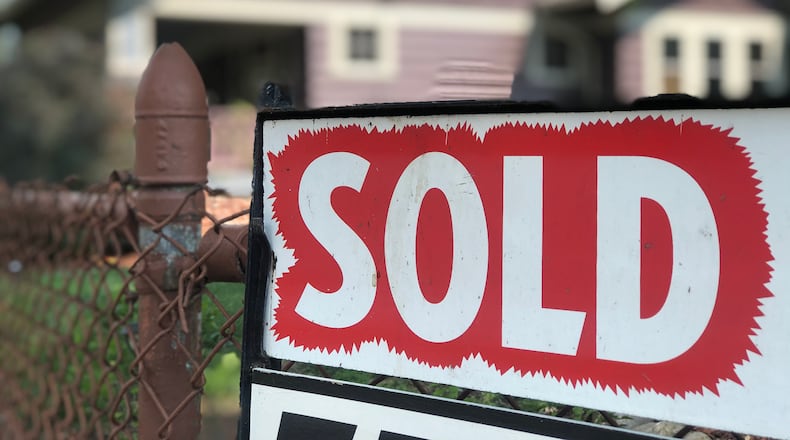Southeast Dayton neighborhoods have been a major source of housing market strength. They added nearly $93 million in value, which is about half of the city’s total residential gains, Keith said.
Other parts of the city did not perform nearly as well, and some experienced declines.
Also, Dayton properties lost $1.2 billion in value between 2007 and 2014, meaning there is still a long climb back to mid-2000 levels.
“We still have a long way to go,” Keith said. “We are still $1 billion behind where we were before the recession.”
Every six years, the auditor does a revaluation, which is major and comprehensive update of property values. The last one was in 2014, but the auditor also does a triennial update in between (last completed in 2017).
Until recent updates, Dayton’s property values were headed in the wrong direction.
They declined 2% in 2008, 12% in 2011 and 9% in 2014.
After that, they stabilized and saw an uptick of 0.5% in 2017.
But between 2017 and 2020, values shot up 5.5%, or more than $209 million, which was the largest increase since 2005.
“It’s been 15 years since we’ve seen these types of numbers,” Keith said.
This is very good news for a city that was badly wounded by the “gut punch” of the economic downturn, the foreclosure crisis and predatory lending, Keith said.
The Gem City was hit earlier and harder by the Great Recession than many other communities across the country, he said, and Dayton properties lost more than 25% of their value during the downturn.
But valid residential sales in the city have soared, Keith said, and many home sellers have had their properties sell shortly after hitting the market, sometimes above asking price.
Southeast Dayton, in particular, has been a hotbed of real estate activity. The area had more than 2,000 valid residential sales between 2017 and 2019.
That exceeds the sales in the next three sections of Dayton combined: Fair River Oaks Council (FROC), northeast and northwest.
Housing values in southeast Dayton have risen by $92.8 million, which is nearly equal to the combined growth of all other areas that saw gains. City leaders said about half of Dayton’s residents live in southeastern neighborhoods.
Sections of Dayton that saw values decrease include FROC (-$14.1 million), southwest (-$6 million) and innerwest (-$9.7 million), according to auditor data.
About 57% of Dayton’s neighborhoods saw values increase and 39% saw declines, the auditor said. About 3% saw no change.
Dayton clearly had a stalled housing market back in 2014, considering that more than 100 areas in the city that the auditor considers neighborhoods had no valid sales, said Dayton Mayor Nan Whaley.
By comparison, only 10 Dayton “neighborhoods” had no valid sales in the 2020 valuation.
“This is hopeful news,” Whaley said.
FROC in the revaluation period had the second most number of valid sales (726). Northeast had 696 and northwest had 507.
The areas with the fewest sales were downtown (104) and innerwest (151).
Despite the pandemic, Ohio’s and the local housing market continue to show signs of strong demand.
There were 1,773 units sold in the Dayton market last month, up more than 6% from July 2019, and the average sales price was up more than 9%, according to Ohio REALTORS.
Historically low mortgage rates have helped spark interest in housing in the near term, and Ohioans seem to appreciate that home purchases are a solid, long-term investment, said Chris Reese, president of Ohio REALTORS.
About the Author


